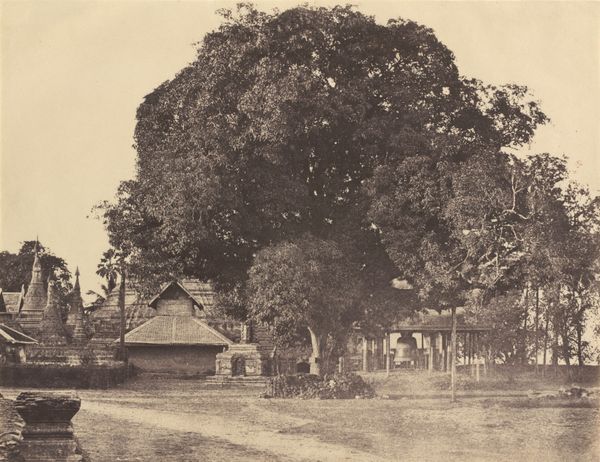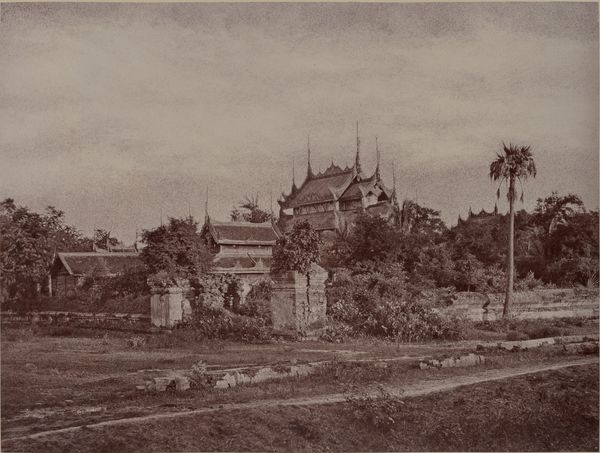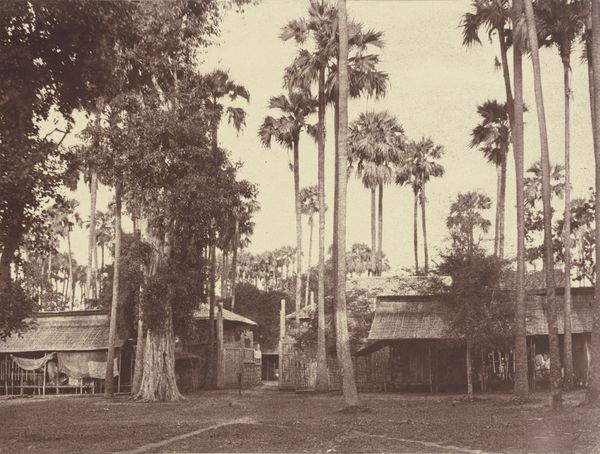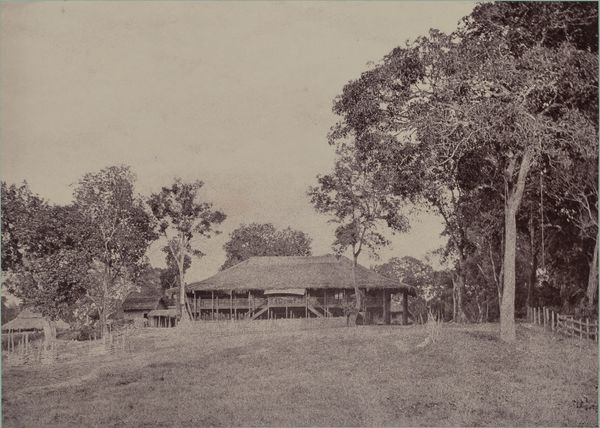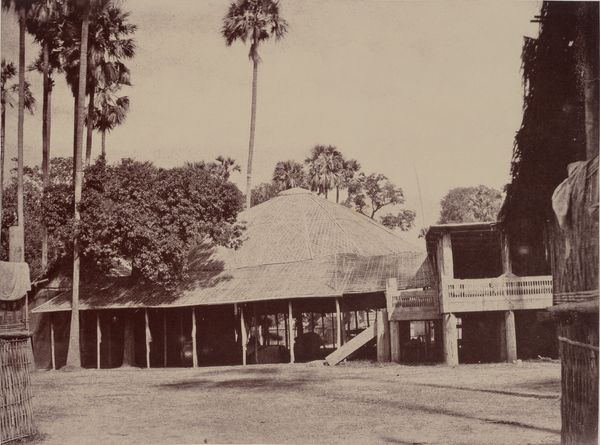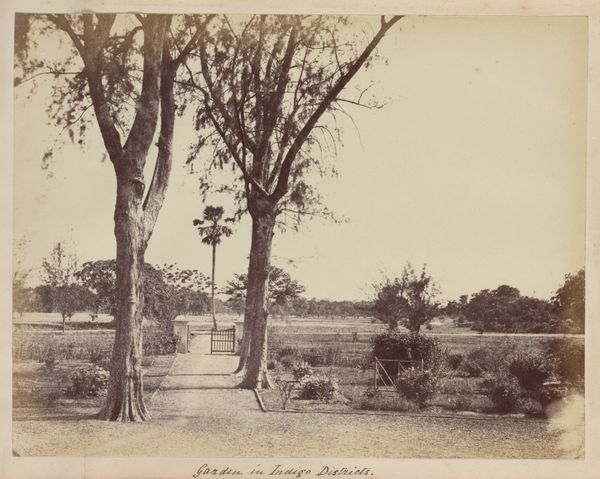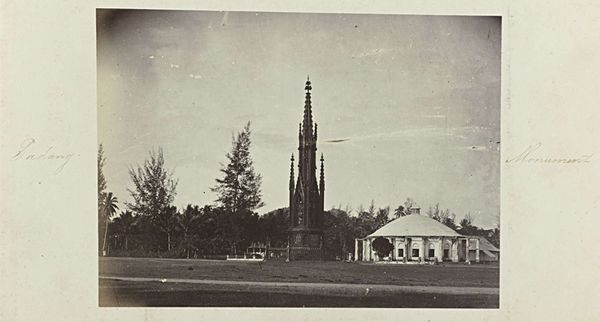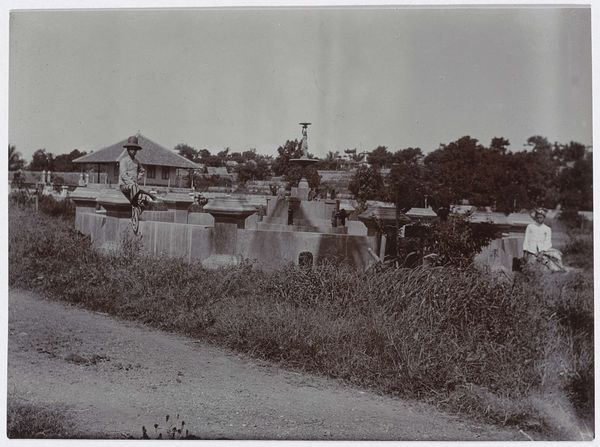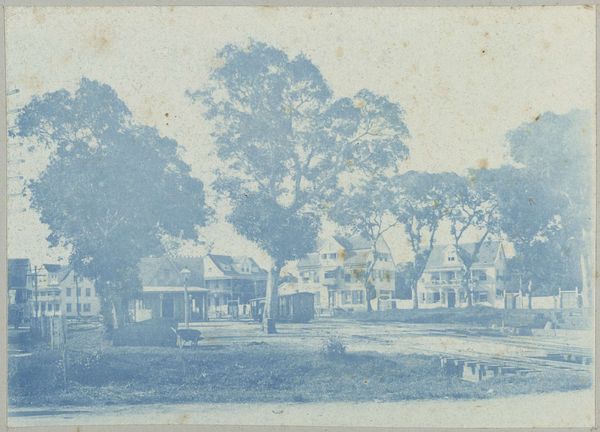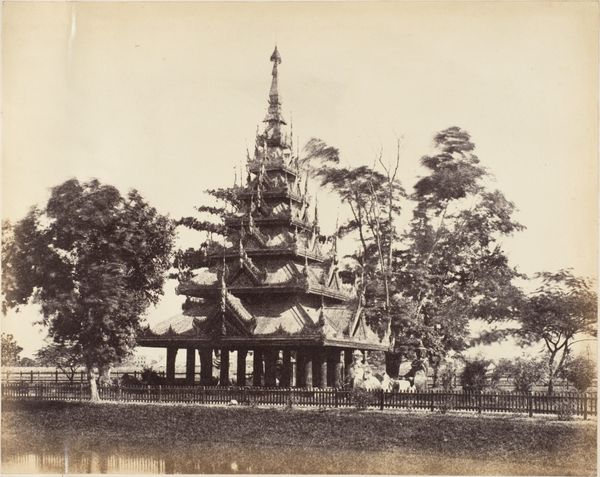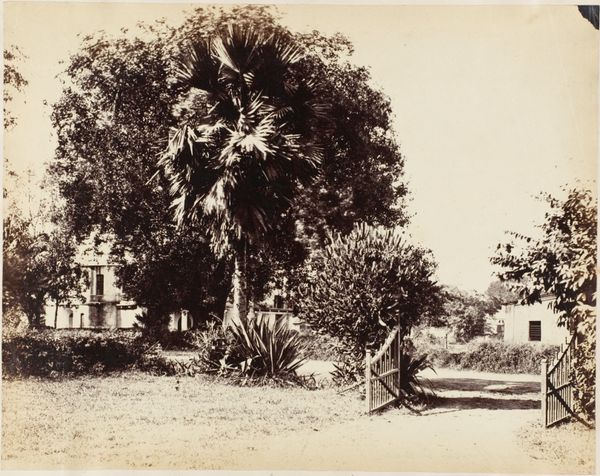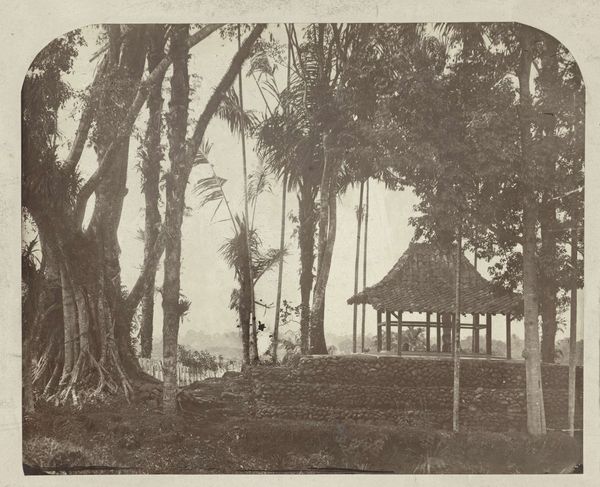
photography, albumen-print
#
asian-art
#
landscape
#
photography
#
albumen-print
Dimensions: image: 25.9 × 35 cm (10 3/16 × 13 3/4 in.) mount: 45.7 × 58.3 cm (18 × 22 15/16 in.)
Copyright: National Gallery of Art: CC0 1.0
Curator: It’s fascinating, isn’t it? We’re looking at Linnaeus Tripe's albumen print, titled "Rangoon: North Entrance to the Shwe Dagon Pagoda," taken around 1855. Editor: It has this otherworldly quality. Almost dreamlike. The textures created by the trees, foliage, and the wooden fence have a powerful materiality. It looks like a sepia-toned stage set. Curator: Indeed. Tripe, a photographer working for the British East India Company, aimed to document the architecture and landscapes of the region. These images then circulated widely, influencing Western perceptions of Asia. Editor: Interesting to consider these prints in the context of the Company's activities. Were these photographs simply a means of documentation, or also instruments of power and control? How did these visual representations shape colonial narratives and solidify their authority in the region? The labor that went into creating these images is worth exploring. From the preparation of the albumen prints to the logistics of traveling with bulky equipment in challenging conditions, the process itself speaks volumes. Curator: Exactly. Photography during this period played a significant role in shaping the visual culture, influencing how people perceived distant lands. This pagoda, sacred to the Burmese people, became a subject for the colonizer’s gaze, changing the object's relationship with its native audience. Editor: How were these photographs received back in Europe? What impact did they have on artistic trends and broader public understanding of Asian culture? We should examine the cultural baggage they carried and the role of the art institutions in their dissemination and the relationship between artistic intent and how the piece was viewed historically versus how we can see it now. Curator: All good questions to consider. The social and political circumstances in which a piece of art like this are viewed really impact its place and its worth. It is also helpful to consider the value of documentation here—what would history look like for the pagoda or for Myanmar itself without them? Editor: Thinking about the photographer’s effort alongside the impact on viewers and subjects adds depth to how we receive the work today. Curator: I completely agree; it’s all intertwined. Editor: Absolutely. Thanks for unpacking that!
Comments
No comments
Be the first to comment and join the conversation on the ultimate creative platform.
